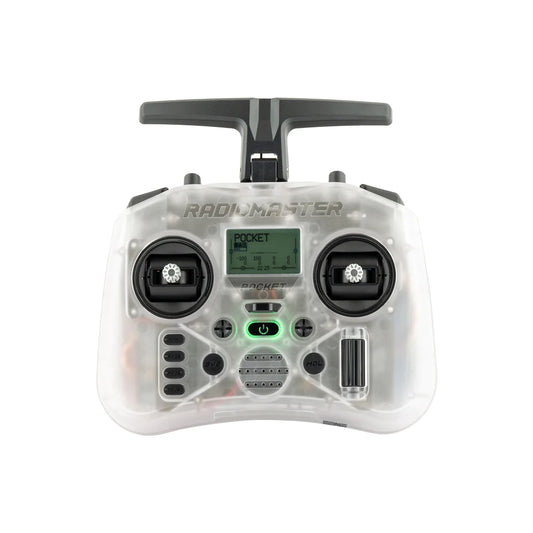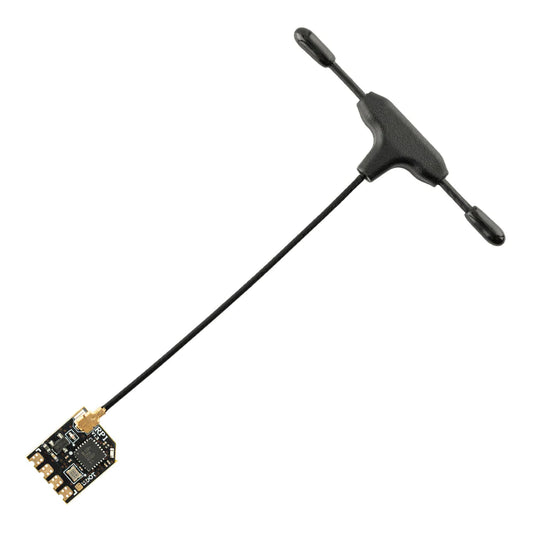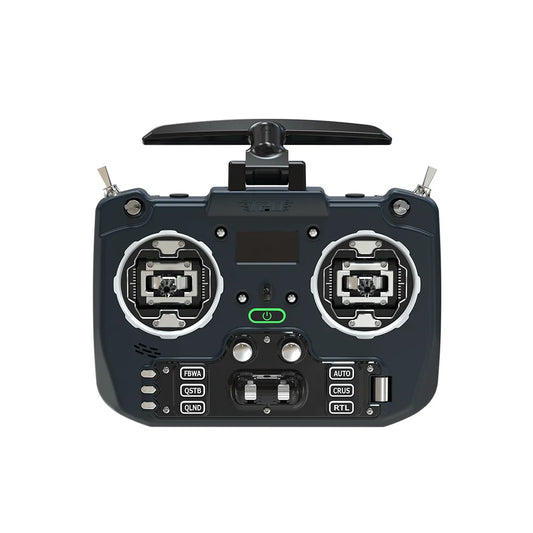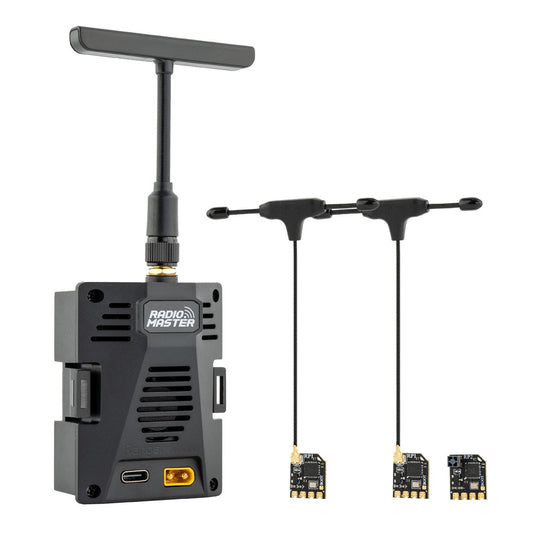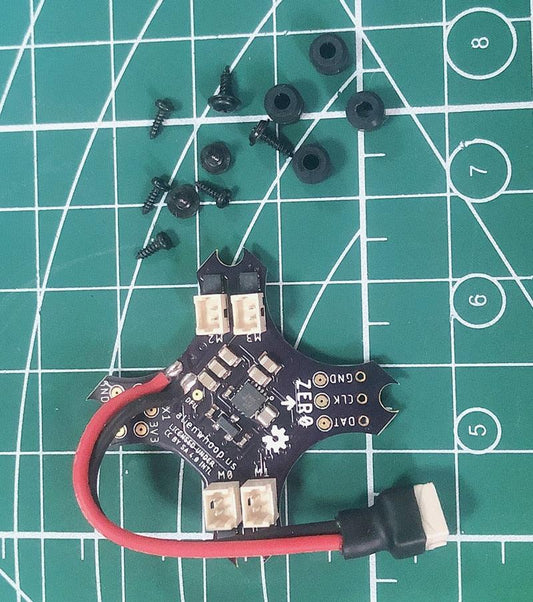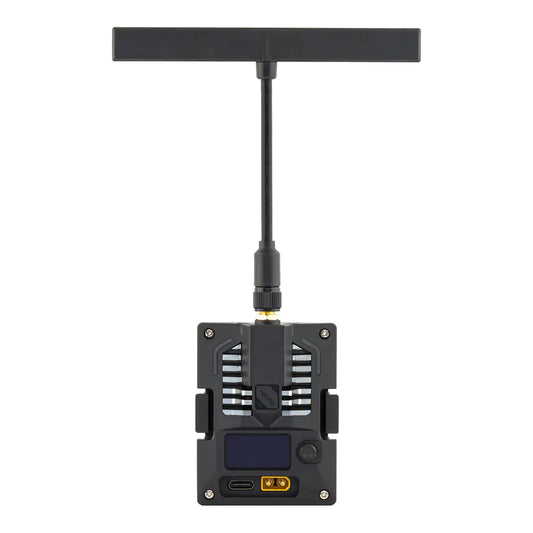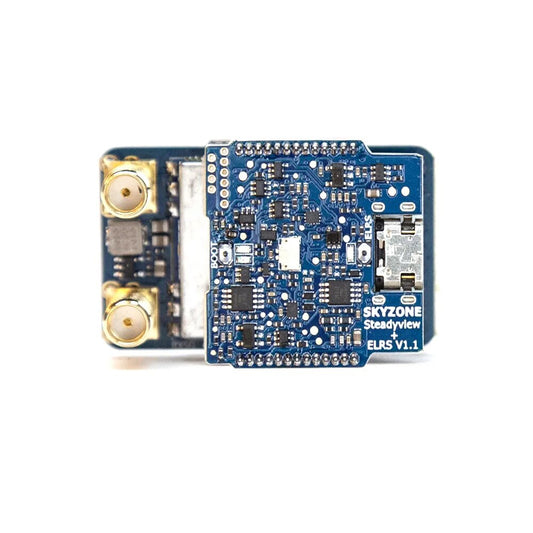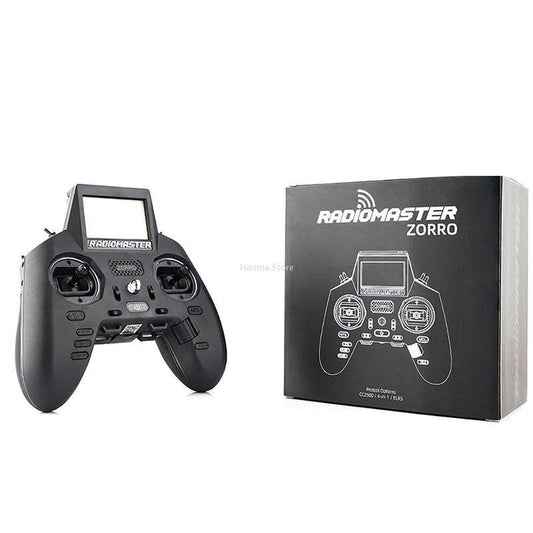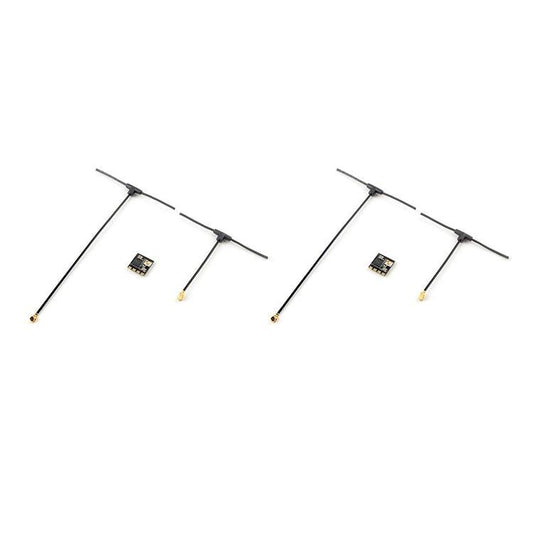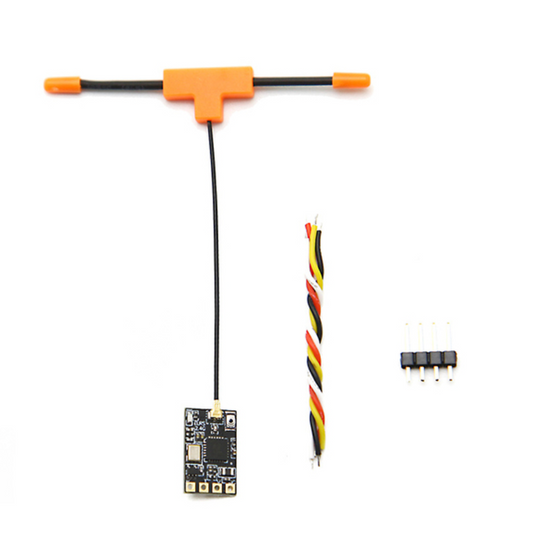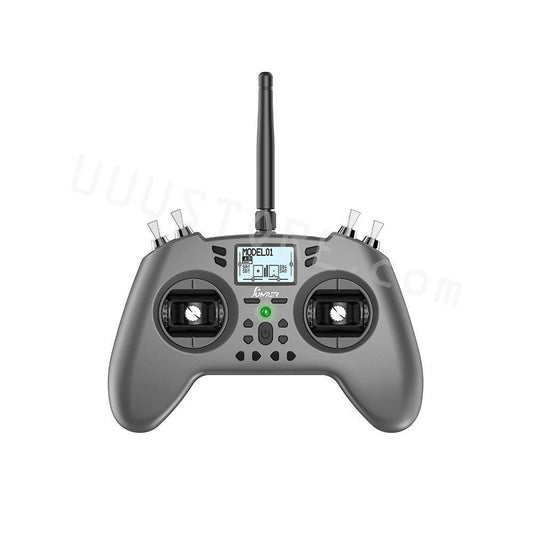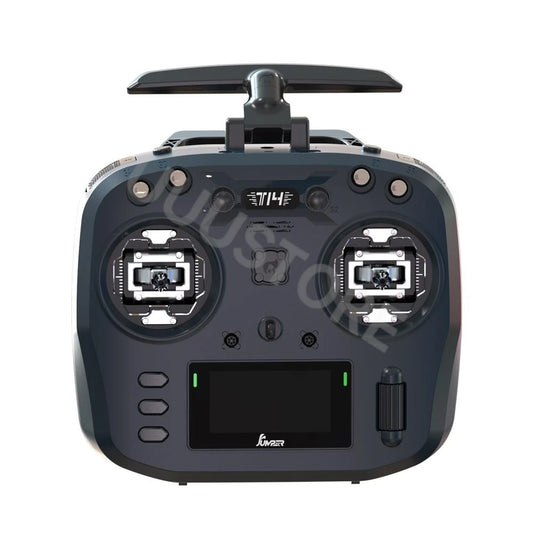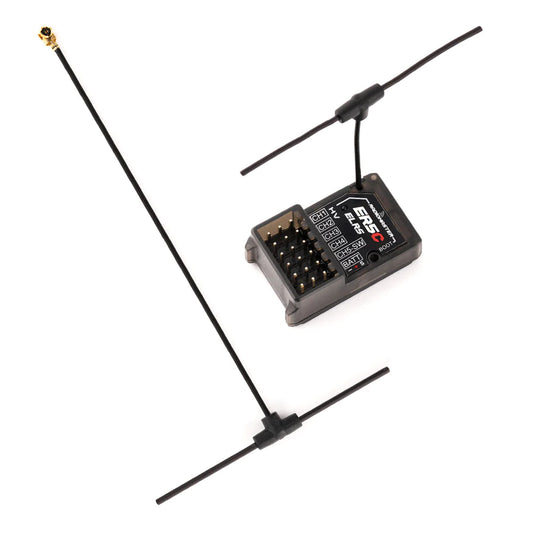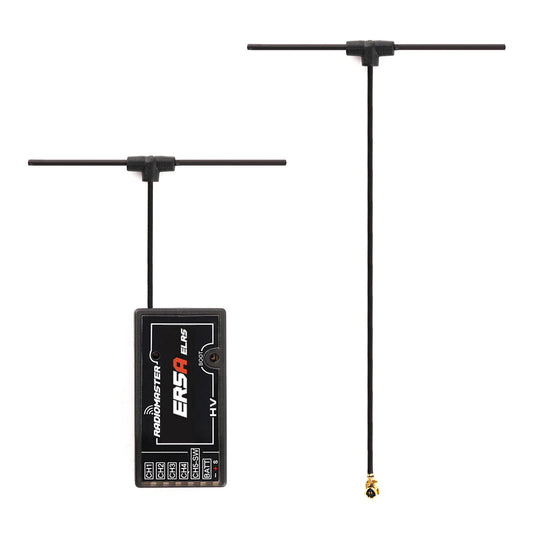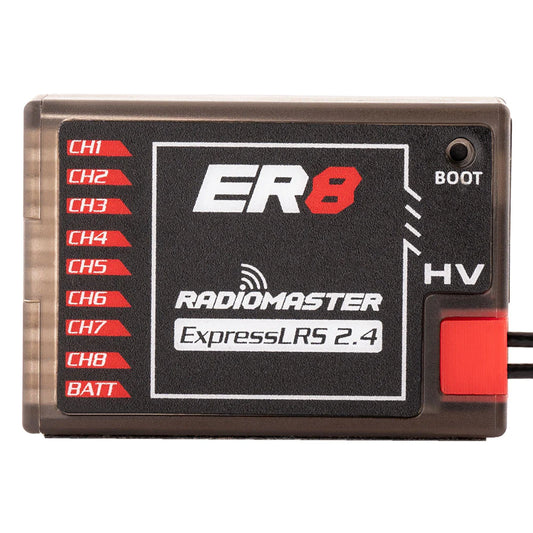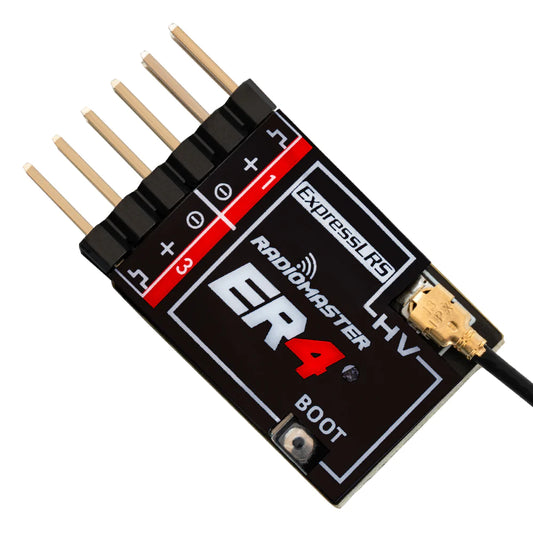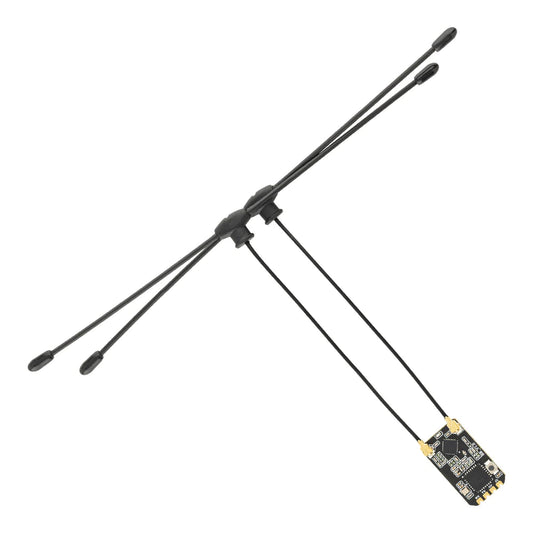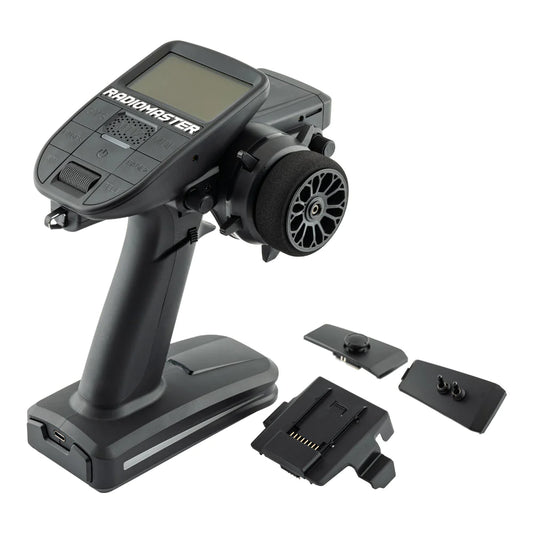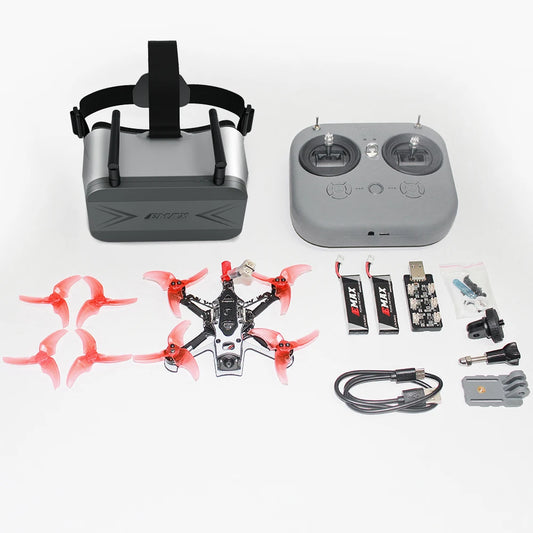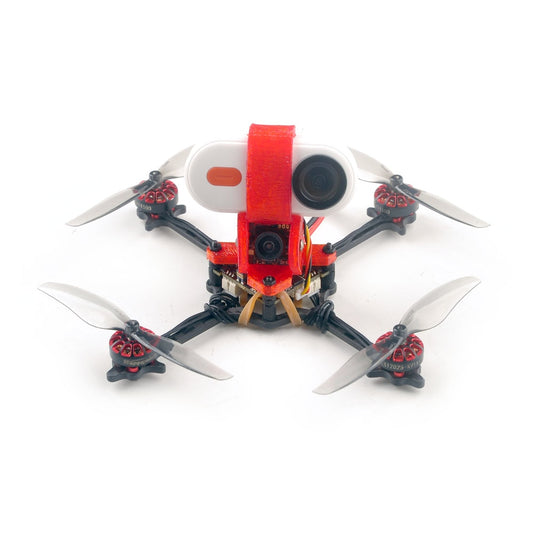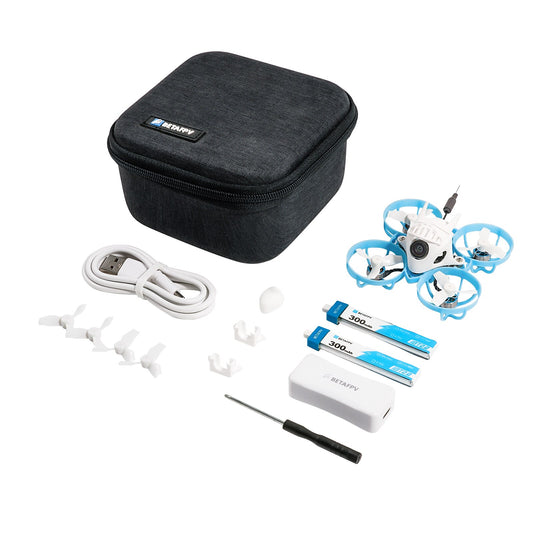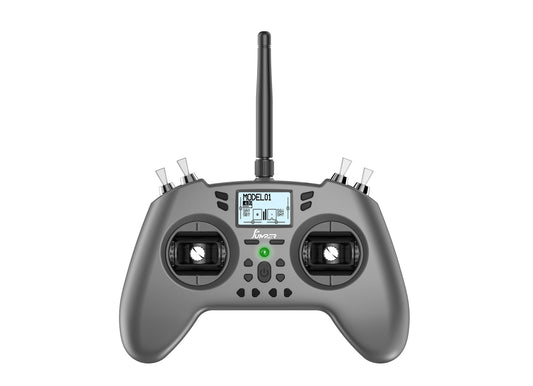-
RadioMaster Pocket Radio Controller (M2) - 16Channel 2.4GHZ ExpressLRS MPM CC2500 EdgeTX System
Regular price From $99.00 USDRegular priceUnit price per -
RadioMaster RP1 V2 ExpressLRS 2.4ghz Nano Receiver - With Built-in TCXO Fit For Whoops, Drone, Fixed-Wing Aircraft
Regular price $32.00 USDRegular priceUnit price per -
iFlight ELRS 500mW Receiver - ExpressLRS 900MHz / 2.4G 500mW RX for FPV Drone
Regular price $26.23 USDRegular priceUnit price per -
Jumper T20S T20 V2 - 2.4G 915MHz 1W RDC90 HALL VS-M Full Size Radio Remote Control Edgetx ELRS
Regular price From $138.94 USDRegular priceUnit price per -
RadioMaster Ranger Micro 2.4GHz ELRS Module Combo Set for TX16S TX12 MKII
Regular price From $48.68 USDRegular priceUnit price per -
HappyModel Bassline - 2S 2inch Micro FPV Toothpick Drone X12 5in1 AIO Flight Controller 2.4G ELRS 400mW EX1103 KV11000 90mm Frame
Regular price From $156.96 USDRegular priceUnit price per -
Jumper T-Pro V2 ELRS 1000mW 30dBm JP4IN1 ELRS ExpressLRS Radio Control for Hall Gimbals Drones Airplane Multirotor Frsky Flysky
Regular price From $25.43 USDRegular priceUnit price per -
AlienWhoop ZER0 Brushed Flight Controller - for Tiny Whoop Blade Inductrix, Eachine BetaFPV Sbus DSM2 ELRS TBS Crossfire NANO RX
Regular price $39.15 USDRegular priceUnit price per -
Radiomaster BOXER Radio FPV Controller - ELRS 4IN1 CC2500 Multiprotoco Transmitter Built-in Cooling Fan High-Frequency Transmitter
Regular price From $211.60 USDRegular priceUnit price per -
Radiomaster Nomad Dual Band 1-watt Gemini Xrossband ExpressLRS Module Built-in RGB Light Strip With Nano/Micro Module Adapter
Regular price $64.31 USDRegular priceUnit price per -
Axisflying Manta 3.6 Inch FPV Drone - 6S With GPS, DJI O3/RunCam Link Wasp, PNP/TBS/ELRS
Regular price From $329.00 USDRegular priceUnit price per -
RadioMaster Bandit Micro ExpressLRS 915MHz RF Module
Regular price $65.00 USDRegular priceUnit price per -
Skyzone Steadyview+ELRS Backpack Receiver for FPV Goggles 48CH 5.8Ghz V3.3 Hardware
Regular price From $38.43 USDRegular priceUnit price per -
GEPRC Cinebot30 HD - Walksnail Avatar FPV Drone HD 3inch 6S FPV Drone ELRS 2.4 G TBS NanoRX Avatar goggles combo Vista System
Regular price From $487.49 USDRegular priceUnit price per -
HappyModel Crux35 - ELRS X1 CrazyF411 BLHELIS 5A OVX303 300mW Caddx Ant 1200TVL EX1404 KV3500 4S 3.5inch FPV Freestyle Drone
Regular price $279.00 USDRegular priceUnit price per -
Jumper T Pro V2 Internal 2.4G 1000mW ExpressLRS ELRS module Radio Controller Hall Sensor Gimbals EdgeTX/OpenTX TPRO
Regular price $128.90 USDRegular priceUnit price per -
RadioMaster Zorro ELRS 2.4 GHZ RC Controller CC2500 JP4IN1 Radio Transmitter with Battery Hall Gimbal Remote Control Helicopter
Regular price From $148.33 USDRegular priceUnit price per -
HappyModel ExpressLRS ELRS 2.4G RX SX1280 Nano Long Range Receiver PP EP1 EP2 RX EP1 TCXO/EP2 TCXO 10X10mm for RC Airplane
Regular price From $14.31 USDRegular priceUnit price per -
Jumper ELRS Aion Rx Mini 2.4GHZ 16CH Receiver Compatible with 2.4 mode 5KM Range Transmitter for RC Drone
Regular price $26.89 USDRegular priceUnit price per -
Jumper T-Lite V2 Transmitter - 2.4GHz 16CH Hall Sensor Gimbals Built-in ELRS/ JP4IN1 Multi-protocol OpenTX Transmitter for RC Drone Airplane FPV Remote Controller
Regular price From $90.30 USDRegular priceUnit price per -
GEPRC ELRS 915M/2.4G Gemini Xrossband Receiver for FPV Drone – Dual-Band, 100mW, 1000Hz, TCXO
Regular price $42.00 USDRegular priceUnit price per -
Happymodel Mobula7 O4 2-Inch 2S Digital HD FPV Whoop with DJI O4 Air Unit and ELRS 2.4G Receiver
Regular price $319.00 USDRegular priceUnit price per -
DarwinFPV Johnny 5 Analog 5-Inch FPV Drone – PNP & ELRS BNF (1W VTX, 174km/h, F405 FC)
Regular price From $265.00 USDRegular priceUnit price per -
Sub250 Nimble65 1S Analog RTF Combo with ELRS 2.4G Radio, DVR FPV Goggles, and Turtle Mode – 65mm Whoop Drone Kit for Beginners
Regular price $299.00 USDRegular priceUnit price per -
iFlight ExpressLRS ELRS Diversity Receiver - ELRS 900MHz 500mW True Diversity RX / ELRS 2.4GHz 250mW True Diversity RX for FPV
Regular price $33.73 USDRegular priceUnit price per -
Jumper T14 Transmitter - 2.4GHz/915MHz 1W ELRS VS-M CNC Hall Sensor Gimbals 2.42" OLED Screen EdgeTX Radio Controller for FPV RC Racer Drone
Regular price From $129.42 USDRegular priceUnit price per -
RadioMaster ER5C 2.4GHz 5Ch ELRS PWM Receiver - Supports 8.4V HV Servos Fit for Aircraft applications
Regular price $35.00 USDRegular priceUnit price per -
RadioMaster ER5A 2.4GHz 5Ch ELRS PWM Receiver - Support 8.4V HV Servos for Aircraft applications
Regular price $35.00 USDRegular priceUnit price per -
RadioMaster ER8 2.4GHz ELRS PWM Receiver - 100mw PWM Receiver Specially Designed For Fixed-wing Aircraft Airplane Drone With Dual Antenna
Regular price $49.00 USDRegular priceUnit price per -
RadioMaster ER4 2.4GHz ELRS PWM Receiver - Light Weight and Small Size Suitable for Small Aircraft,FPV Drone, RC Car, Boat
Regular price $23.99 USDRegular priceUnit price per -
RadioMaster Bandit BR3 ExpressLRS 915MHz Receiver
Regular price $35.00 USDRegular priceUnit price per -
RadioMaster MT12 Surface Radio Controller - Supported By EdgeTX, ExpressLRS Boasting 10 Physical Input and Handle 16 32 Channels for RC Cars Trucks Boats
Regular price $159.00 USDRegular priceUnit price per -
Emax Tinyhawk III Plus - Freestyle Analog/HD Zero BNF/RTF Racing Drone TH12025 7000KV 2S 2.4G ELRS With Camera Quadcopter
Regular price From $183.71 USDRegular priceUnit price per -
HappyModel Crux3 - 1S ELRS 3inch FPV Toothpick Drone F4 2G4 Built-in SPI ELRS 2.4G OPENVTX 400mW Caddx Ant EX1202.5 KV11500 1S
Regular price $134.27 USDRegular priceUnit price per -
BETAFPV Meteor65 2022 Version - Brushless FPV Racing RC Drone ELRS 2.4G/Frsky LBT/TBS M01 AIO Camera VTX Whoop Quadcopter
Regular price From $170.02 USDRegular priceUnit price per -
Jumper T-Lite V2 Transmitter - 2.4GHz 16CH Hall Sensor Gimbals Built-in ELRS/ JP4IN1 Multi-protocol OpenTX Transmitter for RC Drone Airplane
Regular price From $28.98 USDRegular priceUnit price per
